
‘People say that it is difficult to know oneself but it’s not easy to paint oneself either’
Excerpt from a letter from Vincent van Gogh to his brother Theo, September 1889
My first introduction to the Dutch painter Vincent Willem van Gogh was at school. A tortured artist who cut off his ear and painted thick, brightly coloured swirly paintings.
He felt dramatic, passionate and extreme.
12-year-olds tend to want to produce art that looks more realistic, so I think at the time, I wanted to try and paint like Cezanne. Cezanne’s still life’s hit the dizzy heights of being recognisable yet achievable, with a nice painterly style.
But thinking back, I probably felt I was being sophisticated and different; copying Van Gogh as a young painter seemed too obvious.
It wasn’t until an art trip at 16 to the National Gallery, London that I rediscovered the Sunflowers…

Vincent van Gogh, Sunflowers, 1888. (Van Gogh signed his works ‘Vincent’ because people had trouble pronouncing his surname.)
In real life, Sunflowers have got such a huge draw. The painting has got a great composition, and the palette is harmonious.
But mostly, I loved how thick the paint was.
I painted very thinly, mainly because I didn’t have any money as a young art student. But I thought that it was so fantastic that Vincent was so dedicated he would just paint how he wanted; he went all in!
Van Gogh was relatively unknown in his lifetime, always financially really hard up, in fact, he only sold one painting, yet he still indulged like he had shares in a paint company.
With expressive, thick impasto brushwork, compelling use of complementary colours and the emotional power of his paintings, Vincent van Gogh is now considered one of the art world’s most recognised painters. His painting years were unbelievably short (lasting only around ten years from 1880 to 1890), but his massive body of works comprises over 2,000 canvases and drawings.
So when last month saw the opening of a new exhibition in London’ Van Gogh. Self Portraits at The Courtauld, London 3rd Feb – 8th May 2022‘ I couldn’t wait. It would be the first time van Gogh’s numerous self-portraiture have been celebrated together, with several of the works last together in his studio, reunited for this show.


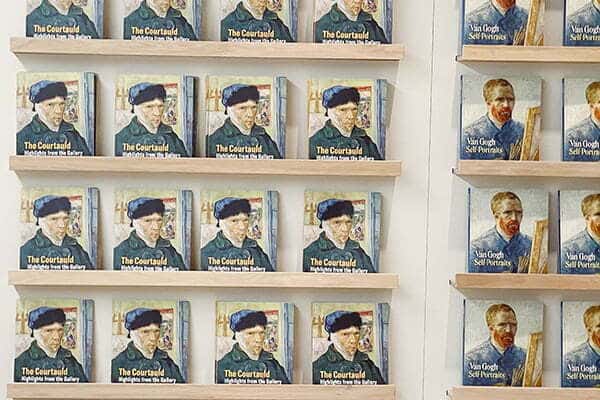

Vincent’s Early years – Netherlands 1853 – 1886
Vincent struggled to find a career where he felt he fitted in and proved useful.
He initially worked as an apprentice for International Dutch art dealers, Goupil & Co, but when he was dismissed, he moved to England to become an assistant teacher at a school in Ramsgate. 2 years later, he dedicated himself to preaching living and assisting the poor under quite harsh conditions in Belgium.
Now more than ever felt the need to be around art and artists. He had always drawn and loved being outside, surrounded by nature, so aged 27, encouraged by his brother Theo, Vincent decided to become an artist.

Vincent van Gogh, Pollard Birches, Nuenen, Netherlands, March 1884
For the next three years, Vincent carefully began to develop the skills needed to become an artist, relocating to Brussels in 1880 and later to The Hague. He enrolled on a course at the art academy with the aim to learn as quickly as possible so he could make an income from his work.
He began working from the Cours de dessin, edited by Charles Bargue, a step by step classical drawing progression on the form. These are known as the Barque Plates and are used in classical painting Ateliers for developing drawing skills.
He also took painting lessons in The Hague from the artist and colourist Anton Mauve, Vincent’s cousin-in-law. Mauve taught him the basics of using watercolour and oils. Sure his techniques were not good enough; Vincent practised fanatically.
In 1883 due to a lack of money, he was forced to move back to the rural village of Nuenen, to live with his parents. It proved to be an ideal setting as he could observe and paint farmers, labourers and weavers within the landscape. He sketched and painted at every opportunity, the work distinctly dark, mostly in earth tones.

Vincent van Gogh, Peasant Woman Digging up Potatoes, 1885
You can see the subtle palette in this painting and how close in value a lot of the subject is. This approach is a classical way of painting and painted en-plein air, it’s similar in style to The Hague School; they were known as the ‘Grey School’ due to the predominantly muted palette.

Letter 253 to Theo, Saturday, 5 August 1882
Letters to Theo
Theo van Gogh was Vincent’s younger brother and best friend.
He worked as a successful art dealer in Paris and wholeheartedly supported Vincent’s art career. He gave him unfailing financial and emotional support, including a monthly allowance, with the understanding Vincent would send him all of his artwork, and Theo would, in turn, try to sell them.
When Vincent and his brothers and sisters left home, they all wrote to each other regularly. And they wrote hundreds of letters.
Vincent’s letters to Theo are a detailed, poignant journal about his personal struggles, daily life and work. Alongside his thoughts about art, Vincent would include sketches and ideas for paintings he was working on; he called them ‘scratches’.
Vincent also sent Theo orders for canvas, brushes and paint tubes from Paris,
‘I must warn you that very shortly I’ll need a big order for colours for the autumn, which I believe is going to be absolutely marvellous’,
Vincent to Theo, Arles September 1888. (In April he had already ordered more than 100 paint tubes)
I’m beginning to see now how he painted so thickly with such abandon! Theo was footing the bill!
Theo kept every one of these letters from his brother (651 in total). The majority of Theo’s correspondence back is filled with encouragement; he was one of the few people who really understood Vincent and was often concerned about his brother’s mental condition and health.
Paris 1886
In 1886, Theo asked Vincent to come and live with him in Paris, and from March, they shared an apartment in Montmartre. Here, he could introduce Vincent to his circle of colourful artist friends, Émile Bernard, Paul Gauguin, Camille Pissarro and Henri de Toulouse-Lautrec.
Van Gogh was exposed to and influenced by Impressionists, Symbolists, Pointillists, and Japanese art.
From his earliest work in the Netherlands which was dark and heavy, van Gogh began to use a lighter palette and expressive brushstrokes to capture light and movement.
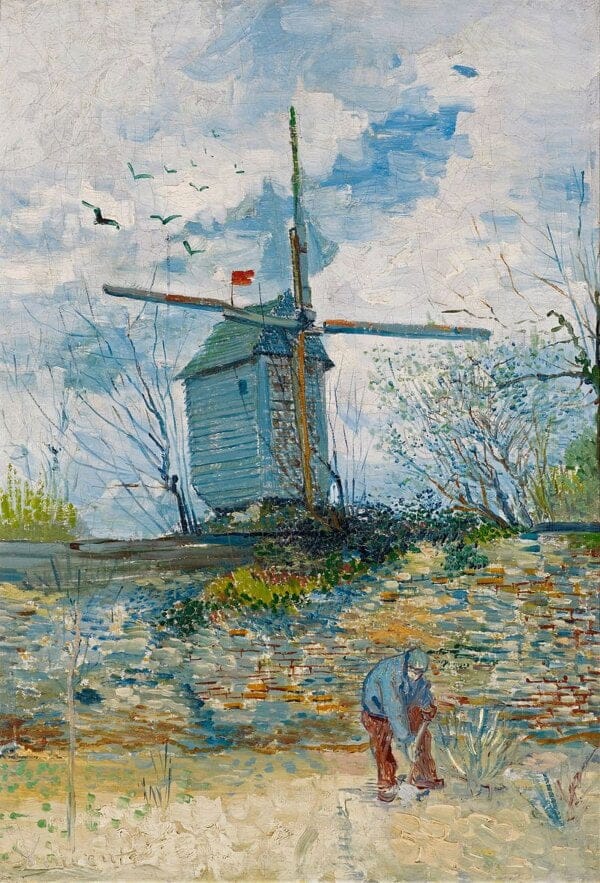
Vincent van Gogh, Le Moulin de la Galette 1886
Van Gogh had started to learn some of the basics of oil painting, so this was painted just a year later than the previous painting of the Women digging Potatoes. You can see the impression Paris made on him reflected in this painting and the signature Van Gogh yellow and blue combination in the colours on the wall. Some of his more classical painting techniques are still there with the beautiful painterly sky.
The portrait exhibition includes self-portraits made during those early years in Paris, alongside later works created after Vincent’s move to the Arles, South of France, the most turbulent period in his life.
South of France 1888
In February 1888, tired of city life and longing for a warmer climate, Vincent decided to move to Arles, South of France.
The Provencal landscape provided an ideal setting for Van Gogh. In letters to Theo, he expressed his delight at the sunlight, bright colours, landscape and abundance of flowering trees when he arrived in Arles. His painting style developed, it became looser, and he used bold experimentation and more expressive marks.

Vincent van Gogh, Pink Peach Trees, 1888
You can see how the intensity of colours are merging, and I really love the ground underneath the tree; it reminds me of a Monet or Pissarro. It’s got lovely colours in the shadows and muted purple hues. This particular painting was dedicated to Anton Mauve, who taught him so much about the foundations of painting techniques.
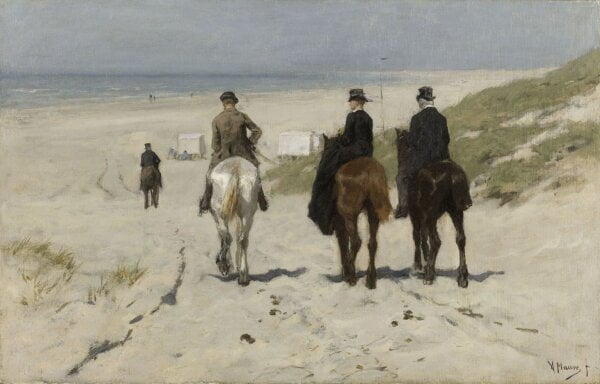
Anton Mauve, Morning Ride on the Beach (1876), oil on canvas
A place where artists will feel at home
His ambition in Arles was to create a community of artists. He envisaged artists working together in a brotherhood, including his friend Paul Gauguin.
Gauguin finally arrived in the South of France in late October 1888, but only after much persuading. (Theo ended up paying for Gauguin’s travel expenses to get him there.)
With the dream to create an artists’ house, where like-minded painters could live and work together, Vincent rented four rooms in the ‘Yellow House’ on Place Lamartine. In preparation for Gauguin’s arrival, he painted huge sunflower paintings to decorate the walls,
‘So Gauguin’s coming; that will make a big change in your life. I hope that your efforts will succeed in making your house a place where artists will feel at home.’
Theo to Vincent, Paris, 19 October 1888
And in the beginning, it worked.
They painted side by side, inspired one another, ate and drank absinthe together.
However, their very different characters caused frequent disagreements, and growing differences in their artistic views led to heated discussions. Vincent began to display signs of agitation, his mental health deteriorated, and he became alarmingly eccentric.
Paul Gauguin was the only artist to ever move into the yellow house; crippled with self-doubt; the pressure became too much for Vincent.
After only nine weeks, Gauguin threatened to leave. Vincent fell ill and cut off his ear. He was then hospitalised in Arles twice over the next few months.
In May 1889, following a series of relapses in his mental health Van Gogh understood his fragility and voluntarily entered a psychiatric hospital near Saint Remy. During this year, Vincent began working again. He was given a room to use as a studio and often painted outside in the gardens, completing around 150 paintings that year.
The following Summer, he moved closer to Paris to be near Theo but was exhausted from working too hard and the unachievable high standards he set for himself. On 27th July 1890, in a field near Auvers-Sur-Oise, France, Vincent reportedly shot himself in the chest*.
He felt he had failed and was uncertain about his financial future.
He died two days later, with his brother Theo at his bedside.
Throughout these years, Vincent produced many self-portraits; he made all 35 of his known self-portrait paintings in the last four years of his life when he was between 33 and 36 years old.
The Portrait exhibition shows Vincent at his most self-aware and sometimes most vulnerable.
The Exhibition


Vincent van Gogh, Paris, spring 1887, Oil paint on artist’s board
The first portrait that grabbed my eye was this one on the right-hand side of the show entrance, and it’s got an incredible intensity to it. You can instantly see the influence of pointillism and Seuret (who first developed this method of optical mixing of the colours) in this mass of broken colour.
Van Gogh uses the coloured ground as an extra layer to the painting method, leaving spaces for the eye to move and contrasting colours to feel like the background is made of hundreds of fireflies!.
This refined self-portrait reveals the importance for Vincent van Gogh of the new pointillist technique pioneered by George Seuret. This involves the use of dots of pure colour placed side-by-side to create a vibrant paint surface.
The colours are often opposite on the colour wheel such as the complementary blues and oranges in the background of this work.
Instead of rigorously following Seuret ‘s method however, van Gogh used colour in an instinctive way wearing his brushstrokes to match his subject matter.
The Courtauld, London

Vincent van Gogh, Self-Portrait with Straw Hat, Paris, August-September 1887, Oil paint on artist’s board

When you get close to the features, it’s like the lines are sculpted around the form of the face, all the lines go in a clear direction of how the features are sitting. This painting has real power, and it’s pretty small. But it felt like the eyes were following you around the room.
This has the same elements of having a ground colour that remains mostly unpainted.
He is wearing a straw hat, and you see this in quite a few of the portraits. It reminded me of the Holbein exhibition and where the headwear is so essential to give you a strong silhouette.
Vincent van Gogh represents himself from the same angle and wearing his large straw hat. Only his clothes change, instead of a workmen‘s jacket he now with the white shirt, blue cravat and waistcoat with red piping found in earlier portraits. He also plays with the colour of his features to experiment with contrast. He even depicts himself with one eye blue and the other eye green complementing the orange and yellows of his beard and hat.
The Courtauld, London

Vincent van Gogh, Self-Portrait with Grey Felt Hat (detail) Paris, September-October 1887, Oil paint on cotton canvas
The brushstrokes are placed down and then not mixed. And the placement of the marks replicates the contours of the face. He’s moved to the brushstroke next to it, and hasn’t blended or smoked the paint. This is more of like a combination of the first painting and the second one we looked at, where there’s less focus on creating a realistic rendering.
And there’s a lot more concern about how the colours interact and repeated patterns. If you look at the background here, there are a lot of lines of colours and a repeated pattern of the blue lines and then the red dots. Then when you look at the cheekbone in the shadow, you’ve got the same designs, a green line and then a white.
Whereas van Gogh’s brushstrokes had previously followed the curve of his face they now radiate outwards from his nose which is the central element of this composition. The effect is enhanced by the large halo created around his head and hat by the orange dots laid over a long blue strokes.
Technical examinations showed that this work was made over several sessions suggesting van Gogh deliberated over his placement of colours and choice of effects. It also reveals new confidence in his skills and a willingness to push the boundaries of the art he’d seen made in Paris.
The Courtauld, London

Vincent van Gogh, Self-Portrait, Paris, autumn 1887, Oil paint on canvas
I liked the framing choice for this portrait. It’s so similar to the brushstrokes that Vincent was now using, and it also reminded me of a woodblock print. His brushstrokes are like chisel marks in the wood.
This painting is closely related to the work on the right they share the same bold hatching, added to enhance specific areas, red on the side of van Gogh‘s nose to create a strong shadow and blue to draw attention to his eyes. This treatment makes every feature bristle with nervous energy and radiate with internal light.
Van Gogh’s fellow Painter Emile Bernard called these works his ‘fiery faces’. They are the earliest self-portrait by van Gogh to be seen by the public at an exhibition he organised in a restaurant in the Monmarte district of Paris in November 1887.
The Courtauld, London

You’ve got this fabulous broken paint application over the top of the drawing, and colours are the brokenness is what adds the visual interest to it, using a dry brush application rather than glazing.
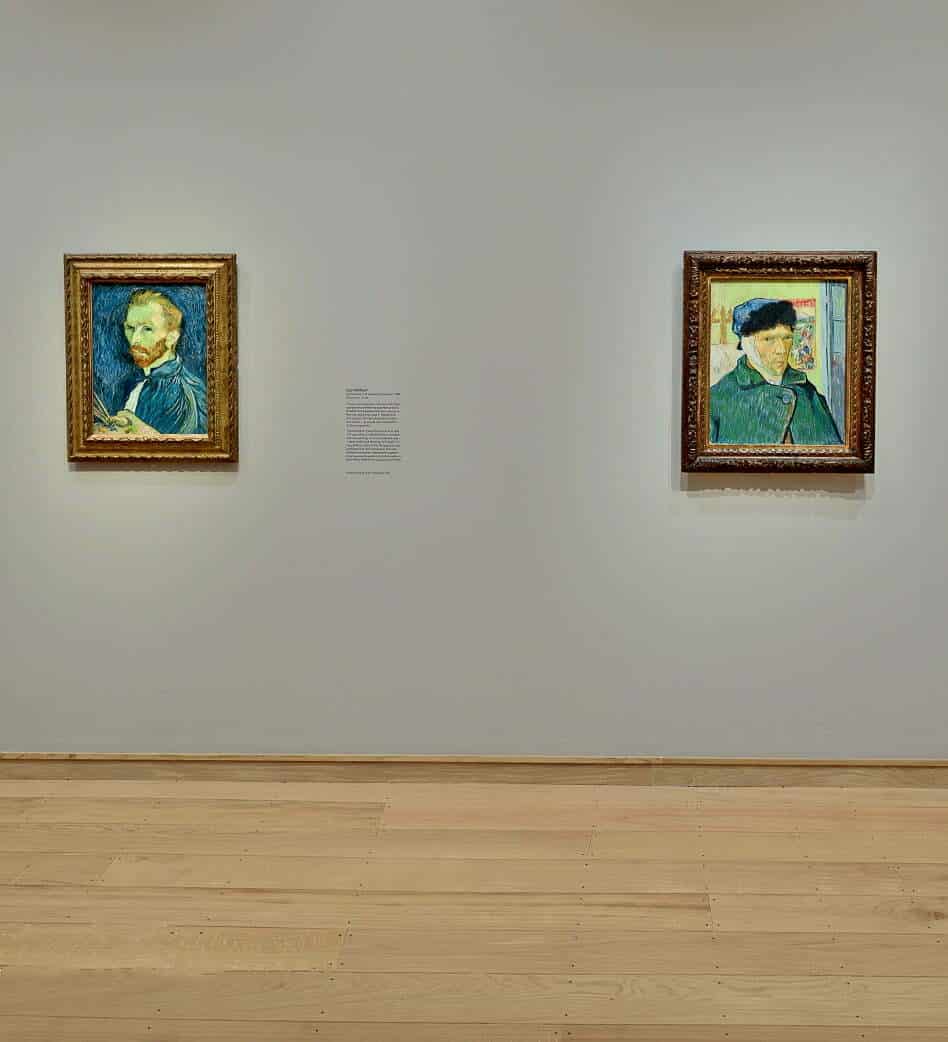

The infamous painting of Van Gogh with a bandaged ear. Protecting her son’s ear with her right hand, it’s like she’s seen the painting and got scared, I am faced with my ear.

Ear to Ear with Van Gogh.
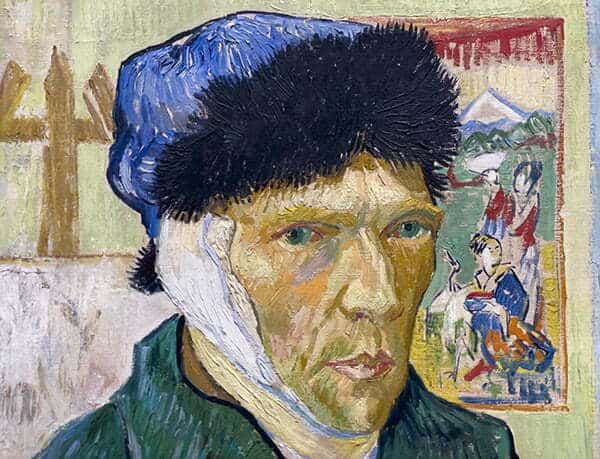
Vincent van Gogh, Self-Portrait with Bandaged Ear, Arles, January 1889, Oil paint on canvas
This work is the only self-portrait by Vincent van Gogh with a recognisable setting. The artist represented himself in the small studio set up on the ground floor of his rented house in Arles. He is flanked by a canvas on an easel and a Japanese woodcut an important source of inspiration. Van Gogh painted this work a week after leaving the hospital where he had received treatment following the mutilation of his left ear (shown here as his right as he always painted himself in a mirror)
This desperate act may have been precipitated by a dispute with his friend and housemate artist Paul Gauguin
The self-portrait can be seen as a powerful statement on van Gogh‘s part but he has started working again, above all it is the artist’s assured brushstrokes and bold colours that declare his renewed ambition as a painter.
The Courtauld, London

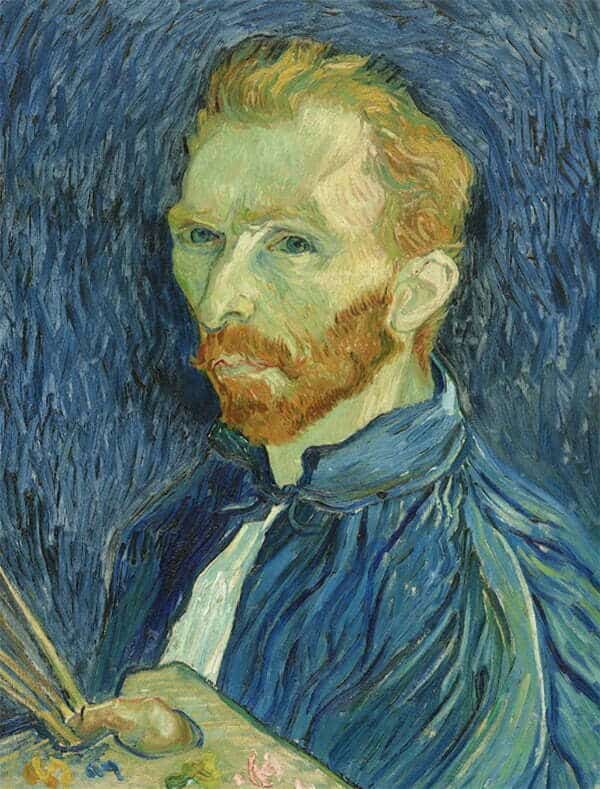
Vincent van Gogh, Self-Portrait, Saint-Remy, first week of September 1889, Oil paint on canvas
You can see the colour palette has changed from the realistic rendering of the first portraits to a yellow-toned skin. The background feels like it’s going to erupt into a starry night!
This is a rare example of Vincent van Gogh representing himself as a painter at work. Brushes and a palette with four colours – the main pigments used in this portrait (the pink on the right should be red but has faded) – protrude from the bottom of the composition.
This exhibition marks the first time in over 130 years that this self-portrait is reunited with the painting on the left painted only a week earlier but showing van Gogh in a very different light. Here he appears more confident and less introverted.
The two self-portraits haven’t been seen together since leaving the workroom in the asylum is Saint-Remy were van Gogh painted them.
The Courtauld, London

Vincent van Gogh, Self-Portrait, Saint-Remy, late August 1889, Oil paint on canvas
This change in the palette is also seen in one of the last paintings hanging in the show.
This felt like an extremely modern portrait and was not credited to Van Gogh for a while. (Not a Fake – The Art Newspaper)
You’ve got this confident, strong contour line depicting the face shape, which holds the whole portrait together. There is nice edge handling, how he has smoked the paint around the rear of his head that then melts into the background.
In the background, you’ve got those angled zigzag lines that we’ve seen in the earlier pieces, and you’ve got lovely muted greens like his earlier colours from The Hague school.
It feels like it’s like a combination of all the styles that he’s practised over the years.
In a letter to his brother Theo he described this painting as an attempt from when I was ill. It was the first work he created following a severe crisis in the summer of 1889. As he had done earlier with self-portrait with bandaged ear, van Gogh returned to painting his own features to help him regain his sense of identity.
‘I firmly believed that if I recover it will be because I’ve killed myself by working which fortifies the will and consequently allows these mental weaknesses less hold.’
This was a courageous stance in the face of great distress. The unusual character of this work means that its attribution to van Gogh has long been doubted recent archival and technical examinations have confirmed its authorship adding a new dimension to van Gogh self-portraiture.
The Courtauld, London

Vincent van Gogh, Van Gogh’s Chair, Arles, November 1888, reworked in January 1889, Oil paint on canvas
Van Gogh‘s painting of a rustic wooden chair in his house in Arles with the artist’s pipe and tobacco pouch on the seat has long been seen as a symbolic self-portrait.
It was painted as a pair to go Gauguin’s chair which depicts the walnut armchair used by the artist Gauguin when he was living with van Gogh. In contrast to Gauguin’s refined seat, van Gogh’s straw-bottomed chair is plain and humble, expressing the painter’s long affinity with the peasant way of life.
This work conveys as much about van Gogh’s character and artistic identity as any of the self-portraits he made during his short career.
The Courtauld, London

Paul Gauguin, Te Rerioa (The Dream), 1897, Oil on Canvas
Hanging just outside the entrance to the exhibition is a Gauguin painting. His old friend and inspiration, sitting next to each other, just like the artist colony he’d dreamt of.
The exhibition is on until the 8th May 2022 ‘Van Gogh. Self Portraits at The Courtauld, London 3rd Feb – 8th May 2022‘
You might also like:
3 complementary colour tricks you can learn from Van Gogh
This 2 min video shows the correct pronunciation of Van Gogh in Dutch!
*There is an alternate story that claims Van Gogh was actually shot by accident, detailed in the book Van Gogh: The Life by Steven Naifeh and Gregory White Smith.


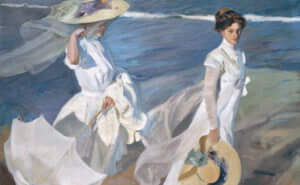
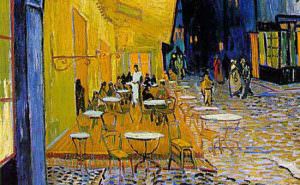

Thank you for such a detailed description of the Van Gogh exhibit in London! Having never studied art or artists, I learned a great deal from your post. You’ve piqued my interest and I want to learn more…I also think there is a traveling Van Gogh exhibit here in the U.S. that I’m going to look up. (?) Thank you for sharing!
Fantastic stuff Vonda, so pleased you enjoyed learning about Van Gogh, hope you manage to catch the traveliing exhibition.
Will
I have been an admirer of Vincent for over 55 years. There has been this pull to enter his feverish color strokes. I once did a large pastel of a brown of sunflowers and called it Whoa VanGogh! Thank you Will for this tour
Glad you enjoyed the tour Andi, great title!
Thank you for this really interesting article Will, especially as I will not get to see the exhibition for myself.
I would also heartily recommend the incredible collection of Van Gogh works at the Kroller Muller museum in Holland. They are part of a beautiful private collection in a stunning museum built within a lovely nature park. There are so many Van Gogh masterpieces here that myself and my husband were moved to tears by them.
Thanks for the tip Julie, good to know about the Muller Museum.
wow thank you so much for this hugely interesting article. I actually passed by this gallery recently so I obviously missed a treat! What a troubled life he had but his brother seems to have been a blessing to him. I loved the chair, such a childlike quality but beautifully done. The self portrait Remy 1889 gave me the impression that he was in a vortex. I appreciated the detailed explanations given with each painting.
So pleased you enjoyed them Margaret.
Thank you for sharing these photographs, it’s a lovely way to bring the exhibition to people like me who are never likely to see one!
Really hope they helped bring the show to life Catrin.
Thank you Will! I haven’t stopped to read anything in depth for a while….as I was reading, I realized I had a copy of “Fields and Flowers” by Van Gogh, which I retreived and will peruse more carefully now. Your article was so enlightening…pointing out aspects of his work….brush strokes, technique. And those powerful portraits…the intensity of the artist showing through. Thank you again for the Museum Tour! A wonderful way to start the day!
So pleased you enjoyed it Delores and glad you’re feeling inspired to re-visit some more Van Gogh pieces.
Always a treat to see the originals…so much to learn from careful viewing! During the pandemic I’ve been doing fine art 1000 piece puzzles…not exactly like seeing the original but definitely a way to study brush stroke, color and technique. For any of your California readers there is quite a nice Van Gogh exhibit at the Santa Barbara Museum of Art until May 22, 2022.
Cheers and thank you for your generous posts!
Wow, 1,000 pieces, that sounds intense Leslie, and yes I’m sure you create an intimate knowledge of the way the brushstrokes are placed together.
Thanks for sharing your trip, Will. I confess never liking his sun flowers–seems too crowded and it seems to have no depth. Not so of his pink peach trees, his chair, and Le Moulin. Your close ups of his self portraits and commentary, “…placement of the marks replicates the contours of the face,” –I would never have noticed. Your perspectives help me to see the previously unnoticed. Merci.
Glad it helped to see the portraits in a new light Jennifer.
Thank you so much for sharing VanGogh with us, and for your comments.
It made a gray Sunday afternoon interesting
Gail
Perfect stuff Gail!
Thank you so much for sharing this will, he’s such a fascinating artist isn’t he.
I do love your informative emails, they are very inspiring…..& hopefully one day i will manage to do a little painting again!
Best wishes
Angela
Really hope you’re feeling inspired Angela.
Thank you for sharing Will. So very fascinating and sad at the same time. I’ll be attending the Van Gogh immersive experience later this month in Sarasota FL. Your article will help put his amazing art in much better perspective, I’m sure. Well done.
Hope you enjoy the immersive experience Carolyn.
Cheers,
Will
Beautifully lovely, Will!! Thank you so very much. I read some time ago, that since Vincent painted himself from the mirror reflection, that the bandaged ear painting portrays his right ear as being damaged, whereas it was his left ear. So, perhaps holding his portraits to the mirror, might show more how he really appeared? I love his writings and many of his paintings, and have read all of his letters. I do think that he is with God, for forgiveness and mercy meet in His Love. God bless, C-Marie
Thanks C-Marie, glad you enjoyed it.
Will
I’m always amazed how Van Gogh’s bold brushwork strokes and colors meld together to create so much detail. So different from the work of a Rembrant as to brushwork and yet so very effective.
Cheers David.
Thanks for this engaging and detailed blog post
Glad you enjoyed it Debbie.
Yet again, Will, you’ve given us a tremendous look in detail at the work of this artist. I’ve read about him before but never in the depth of detail you have. Portraiture is my absolute favorite medium! So appreciate all the work you do!
Thanks so much Des, so pleased you found it insightful.
Will
Thanks Will. Isn’t it wonderful to see the real paintings.
For sure Faye.
Thank you so much Will. I truly enjoyed this material. I studied Vincent when I first started painting. I would copy his works, and those of Monet, my two favorites. You so thoroughly explain so much. I wonder if Vincent was really thinking about his applications and use of color as when one is “in the zone” it seems to just come. I will never mispronounce his name again. Love hearing from you.
So pleased you enjoyed it Marilyn.
Thank you so much Will, for sharing your ‘visit’ with Vincent. You are so fortunate to see these paintings face to face. I live in BC Canada and that exhibition would probably never make it across the Atlantic. Have seen a couple of his paintings at the Vancouver Art Gallery and they were so yummy and thick impasto.
Again thanks for sharing your view of his work, much appreciated!
My pleasure Mairi, glad you enjoyed it.
Wonderful!!! I enjoyed every word of this long post….Van Gogh is awesome and so are you.
You’re very kind Mary!
Cheers,
Will
Thank you Will, like Catrin I’m never likely to attend an exhibition of any famous artist, so it was very kind of you to share Van Gough’s paintings with us, so very happy to have received them.
So pleased you enjoyed seeing them Rhona.
So, dear Will, if Vincent did not mix or glaze, given his side by side style, how do you reckon he obtained those marvelous colors?
Thank you for this, I have seen most of them in Amsterdam but your comments are so useful. Van Gogh was the reason I started painting, and still my inspiration to look for my own ‘mark’.
Hi Cecilia, it’s by the optical mixing effects of having colours placed next to each other.
Will
Thanks Will-
1. You have surely been compared to VG himself.
2. VG started out to be a minister, remember? He went to London’s Marble Arch for the fiery sermons. When his years of study (Greek Hebrew, etc.) did not get him into university, he wrote to Theo.”…I’m a failure in my chosen field, now I can become an artist.”
Your work is an inspiration! JANE/Boston
Cheers Jane.
Right..! Any thoughts of how he worked that effect out sometimes (many times) in just ONE day? Towards the end of his life, when he’d finish a painting in one day..? Thank you, Will, good luck in everything you do,
Thanks Cecilia, he was dedicated to the easel.
Hi Will,
You are my favorite teacher to go to!
I like some of his paintings, especially the late colorful ones.
Also, I was deeply touched by the love and support of his brother… at least he had someone who loved him very much… I guess, he was very sensitive and vulnerable man.
Thank you for the recount of the life story on this now famous painter.
Thanks for your kind words Cecilia, glad you enjoyed reading about the relationship with his brother.
Will
Hey Will,
I imagine anyone who has tried painting themself has an opinion about it. Certainly interesting to hear how Van Gogh felt about it, and then how that translated into the art. I recall my very first selfie I did was in watercolor. I used probably the cheapest watercolor paint sold and a big, fat round brush for the entire thing, forcing me to adapt. And I like it. I still have it hanging up. Maybe the rawness did the trick. In any case, I wish I could see the Van Gogh exhibit at some point and study it. My hope is if I could take something away from it. Thanks for sharing. It’s great.
So pleased you enjoyed it Laura, hope it helped give a glimpse into the show.
Vincent has always been my favourite; I feel it is impossible to separate his passionate, troubled life from the painting. There is no hiding.
Thanks so much for your insights. It was an absolute pleasure to read.
Glad you enjoyed it Linda.
Will
Thank you so much Will, this was a marvellous revisiting to Vincents work and most interesting and enlightening. I have learned a lot!
again
Thank you Regards Pauline Hughes
So pleased you enjoyed it Pauline.
Will
I’m so glad I came across this, Will! You have a great way of writing— really appreciate hearing your thoughts and the descriptions of Van Gogh and his works!
Thanks Kathy, so pleased you enjoyed it.
Will